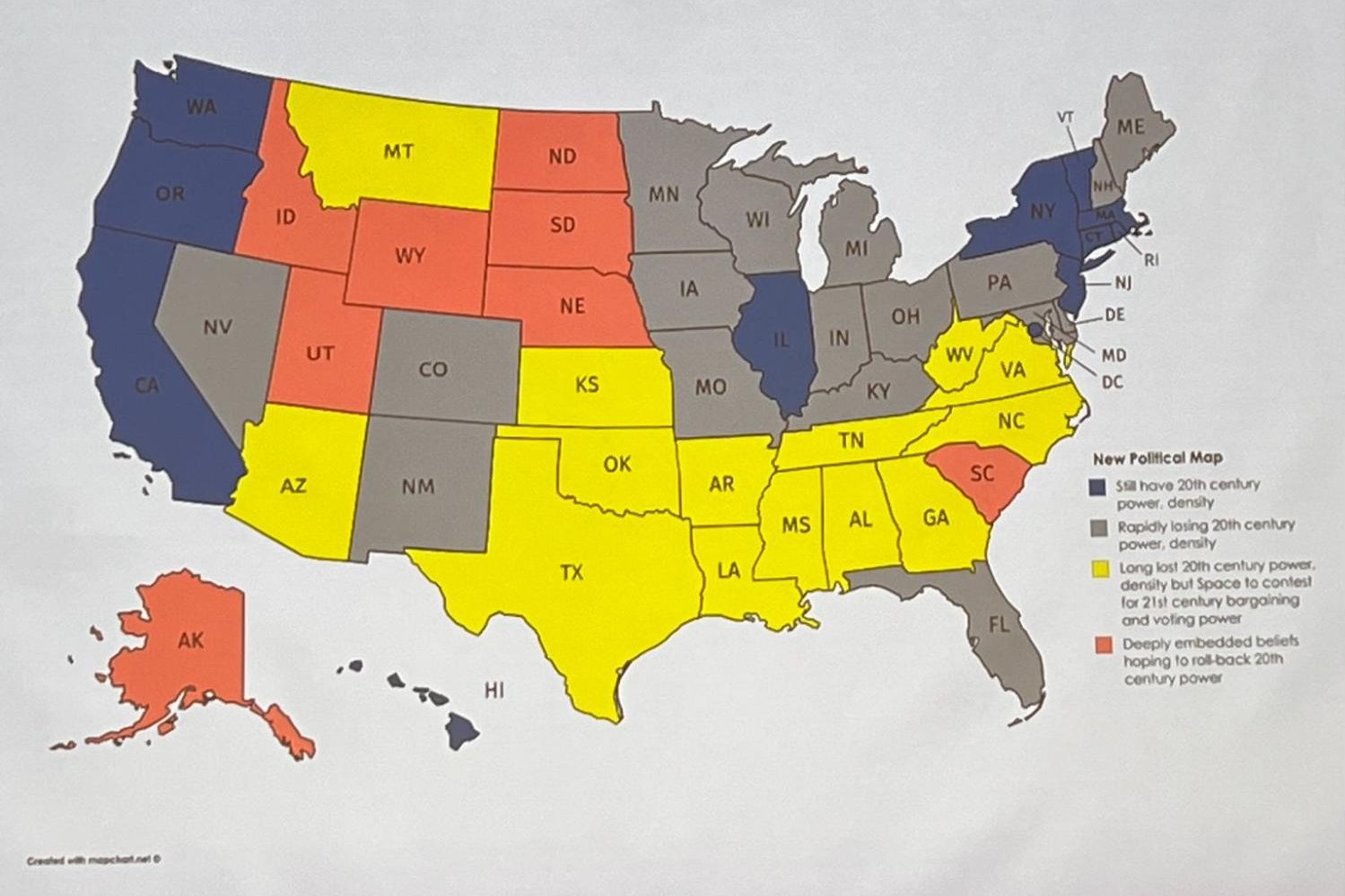Erica Smiley discusses organizing around labor and her new book
Erica Smiley discusses organizing around labor and her new book

Erica Smiley, author and executive director of Jobs with Justice, visited Syracuse University’s Lender Center for Social Justice on Monday to discuss her new book, which centers labor and collective bargaining.
Smiley came to speak at Dineen Hall’s Melanie Gray Ceremonial Courtroom as a part of the center’s conversation, entitled “Labor’s Revival: Unions and the Struggle for Racial and Economic Justice.”
In the introductory portion of her speech, Smiley explained that she intended for her words to act as a teaser for her new book, The Future We Need: Organizing for a Better Democracy in the Twenty-First Century.
The book, which was co-authored with Sarita Gupta, dives into the idea of whole person organizing. Smiley intertwines stories of real working people with different approaches to labor organizing. At the center of it all, Smiley emphasized racial and gender-based justice as fundamental tenets to collective bargaining.
“It’s not just about standing in solidarity with workers as allies but actually thinking of our entire community and our entire selves as … whole people,” Smiley said.
Continuing with the teaser of her book, Smiley discussed how democracy, in addition to suffrage, includes collective bargaining and economics.
“We need to reshape [our labor system] in a way that is actually about democracy and not just about keeping commerce going,” she said after a reference to the National Labor Relations Act, a law that places commerce at the forefront of labor relations rather than centering workers. She discussed how participation in political and economic processes are connected, and how this participation is essential to policy in our economic lives.
Smiley, using an interactive form of presenting, asked the crowd, “What is this?” Pictured on the slide is a map of the Electoral College from the 2020 presidential election. With many red states in the South and Midwest, she explained that workers living in these geographic areas are most often forgotten, and written off as unreachable by national labor organizers. However, she provided a different approach to reaching these workers.

On the following slide appears a different map of the United States, color coding states according to what relationship people have to 20th century means of accessing democracy. Smiley explains this in terms of being able to elect people based on their values in a traditional election, and winning union elections through their worksite. States with the most access to democracy are successful in their labor movements, and are able to win.
For the rest of the states, however, she suggests that the style of organizing must be changed in order to advance the movement. States that are “gray” have recently lost access to Smiley’s terms of democracy, and she maintains that organizers need to keep in mind that people living in these states might be frustrated with previous handling of economic situations. Organizing with this in focus will progress the movement. The pink and yellow states on the map have the farthest removed access to 20th century democracy in Smiley’s terms, and she says that organizers should not avoid these states because of the heavy conservative presence.
“They have an appetite for the original promise …[of] democracy and they have creative ideas for how they might build a 21st century democracy that meets the needs of a modern worker and the society she lives in,” she said.
This change in strategy leads to collective bargaining: working people taking collective action to negotiate with an entity that has power over their wages, conditions, and overall well-being which results in a contract.
Following this, Smiley maintains that race and gender should be centered in collective bargaining.
“Centering the fight against white supremacy is not simply something to do because it’s morally right or because the people around you look a certain way, it is actually the strategy to win.” she said.
With evidence of this from the United Auto Workers and the female workers of international garment companies, Smiley expands on her point: Labor causes are advanced by intersectional viewpoints on collective bargaining.
Smiley touches on the ideas of power, and what kind of power is available when organizing around labor. She says within organizing, “you aren’t empowering workers, you are just exposing them to the power they already have.”
In her closing remarks, Smiley said, “It’s not just about the future of work… it’s about the future of workers within the context of changing employment relations, [and] we need to center workers.”





